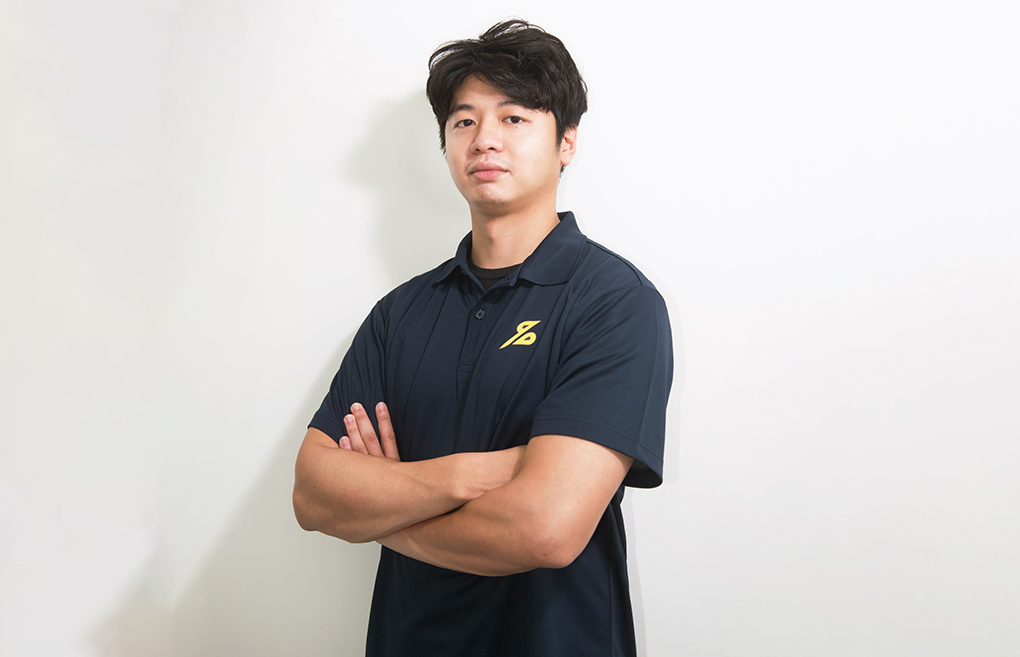Athletic Trainer Pei-Chun Lin Exclusive Interview|2 Actions Boost Customer Growth! My Experience in “Selling Professional Services”
January 10, 2024

Photo by FG Trade from iStock
【The article wants you to know】
1. Methods to avoid in promoting professional services
2. The essence of effectively promoting professional services
3. Practical approaches to building trust and eliminating doubts
In sports events, we often see that when athletes get injured, someone conducts emergency checks and treatment for them; in the behind-the-scenes footage, you might also see athletes lying in the locker room, receiving massages and relaxation from someone. This person, often the “most familiar stranger” to sports fans, is the athletic trainer.
Initially, they specifically served athletes, being responsible for ensuring appropriate training volume, handling sports injuries, and planning the method of returning to the original training mode after an injury. However, due to the increase in amateur sports enthusiasts in recent years, many Athletic Trainers have also changed their service targets, helping the general public manage sports injuries through courses. Even the long-term aches caused by poor posture may improve after taking their classes.
However, like many jobs, such as doctors and consultants, this kind of business that doesn't sell physical goods but provides services based on professional abilities is particularly tricky in marketing. One reason is that material goods can be sold through proactive and large-scale promotions. Still, if overly promoted, professional services can quickly raise doubts, making people wonder, “Is the service quality could be better, which is why it's on discount?”
Without relying on such promotions, how can professional services be sold? Pei-Chun Lin, co-founder of “Ninety Percent Athletic Train”, will share how he increased monthly teaching hours by seventy percent within three months, not only boosting revenue but also helping to expand the team subsequently!

Everything Starts From Choosing a Specialized Sub-field
Pei-Chun Lin was originally a wrestler, and during his training, he came into contact with the profession of “athletic trainer”. He was deeply attracted by its feature of dealing with injuries and connecting back to the pre-injury sports mode and decided to delve deeply into it. After obtaining his certification, he also began to provide one-on-one services.
In the early stage of his practice, his business was relatively stable, relying on customer referrals and word-of-mouth recommendations from seniors. 'But honestly, I had no idea how to do marketing,' he said. It was not until later, when he participated in a course, that he began to understand the marketing of professional services. Based on the goal of 'being the one customers think of and trust to seek help from when they have a problem,' he took two actions to regroup and strengthen his efforts.
“The first action I took after the course was to select a specific ‘sub-field’ to specialize in,” he said. Many people intuitively think that promoting multiple abilities will attract customers, but having too many miscellaneous abilities makes it unclear to customers when to seek help. Choosing a “specialized sub-field” in a vast professional area, that is, finding a type of problem that one can solve, coupled with the correct promotion, gives a better chance of coming to the minds of customers when they encounter specific issues.
For Pei-Chun, although he is capable of solving many sports injuries, he eventually chose to focus on dealing with anterior cruciate ligament (ACL) injuries of the knee.
Why choose to focus on this issue? He shared, “My initial consideration was that after the ACL is injured, there is a high proportion of cases requiring surgery, and after the surgery, a rehabilitation period of nine months to a year is still needed. This injury is obvious and has a significant impact on life.”
Pei-Chun initiated his second action after choosing a “clearly demanded” sub-field.
Accumulating "Trust Assets" to Shape a Reliable Impression
There needs to be more than just setting up a sub-field to make customers think of us when they encounter a problem and feel secure in entrusting us with the solution. As mentioned earlier, this still requires the correct promotion. In the so-called correct promotion of professional services, one of the strategies is to accumulate “trust assets,” which means continuously producing content related to the problem we want to solve, such as observations or solutions to the problem, establishing a clear and reliable impression in the minds of customers.
Compared to aggressive advertising, accumulating trust assets is more fundamental and practical for selling professional services. After all, most professional services are costly; customers always want to find someone they trust to provide the service rather than purchasing because of a random advertisement they saw.
“So, I started managing an Instagram account, posting information related to 'knee injuries,' such as what actions are likely to cause anterior cruciate ligament injuries, and so on,” Pei-Chun said, showing the content of his account on his mobile phone. He also shared that he chose Instagram as a channel to share content because images convey the Before and After of a student's progress in class better than text. Therefore, considering what medium to use to share content should be determined based on the nature of the service.
A month or two after managing Instagram, the most significant progress was not just more and more people coming to ask about knee injury issues! Pei-Chun excitedly said, “Most people who take the initiative to ask usually have a need. They trust me through the content, and, as long as there is no significant problem in the communication process and their doubts can be removed, the probability of them purchasing the course can be as high as eighty to ninety percent.”
Through these two actions extending from the core of selling professional services, Pei-Chun's customer numbers and monthly teaching hours quickly grew within three months. Initially, teaching 80 to 100 hours per month was quite good, but later, the monthly teaching hours increased by seventy percent, reaching nearly 170 hours.
In addition to earning more income, he helped team members by sharing experiences. In the past, only one person was teaching; now, three more partners are teaching, and they have even opened a store.
How do we eliminate customer doubts during the communication process? Here are two suggestions:
“Just now, an essential point was made, which is the communication with customers before the service!” Communication with customers before providing the service is crucial for two reasons: first, it helps to clear their doubts, making them more likely to purchase the service; second, a correct understanding of the service results will significantly affect their subsequent satisfaction.
So, how should we communicate effectively with customers? Pei-Chun added two practices at the end of the interview.
First, summarize the frequently asked questions by customers and clarify doubts beforehand.
For the services provided by Pei-Chun, commonly asked questions include “What is the difference between you and physical therapists?” and “How are your exercise classes different from those at a gym?” etc. He prepared answers for these questions to explain clearly before the customer asked.
From the customer's perspective, doubts might be resolved earlier, but they can also feel the professionalism and dedication of the service provider.
Second, clarify the effectiveness of the service and establish correct expectations.
To sell the service successfully, many people claim they can solve whatever problem the customer encounters. But this is risky because if the issue still needs to be resolved afterward, the customer will likely not repurchase or recommend it to friends and family. If we want to maintain a steady business later on, the only option would be to keep adopting the costliest method, which may only sometimes be the most effective: attracting new customers.
The professional services available are diverse and varied. Only some who adopt these practices will see quick results within three months, like Pei-Chun, or find everything going smoothly afterward. Pei-Chun shared that, although the current operation is still going OK, he is also trying to overcome new challenges. These include how to make team collaboration more efficient and standardize products to save time customizing each one for clients.
“However, we will continue to work hard, hoping to achieve our goal of having service locations in every city and county soon.” He also encourages professional service providers striving to find their footing to refer to the concepts and practices learned in his courses. By doing this while overcoming various challenges, they can at least ensure they are putting effort into the right direction rather than being stuck in common marketing misconceptions!
--
(This article is translated by the Digital Nomad editor group.)
Follow the Digital Nomad Facebook fan page and stay updated with more recent articles on Instagram (@digital.nomad.press)!
This content is protected by copyright. Please respect the author's work and do not copy or distribute without permission.

Editor Group/鐘敏瑜
Minyu is the editor of 'Digital Nomad' and simultaneously manages the content of 'Darencademy' and 'ProjectUp.' She worked as a reporter for the magazine 'MANAGER Today' and as an editor for the lifestyle channel of 'Storm Media'. Also, she had one year of experience in full-time freelancing. Through this platform, she looks forward to sharing essential knowledge and fascinating stories about the nomadic lifestyle.

